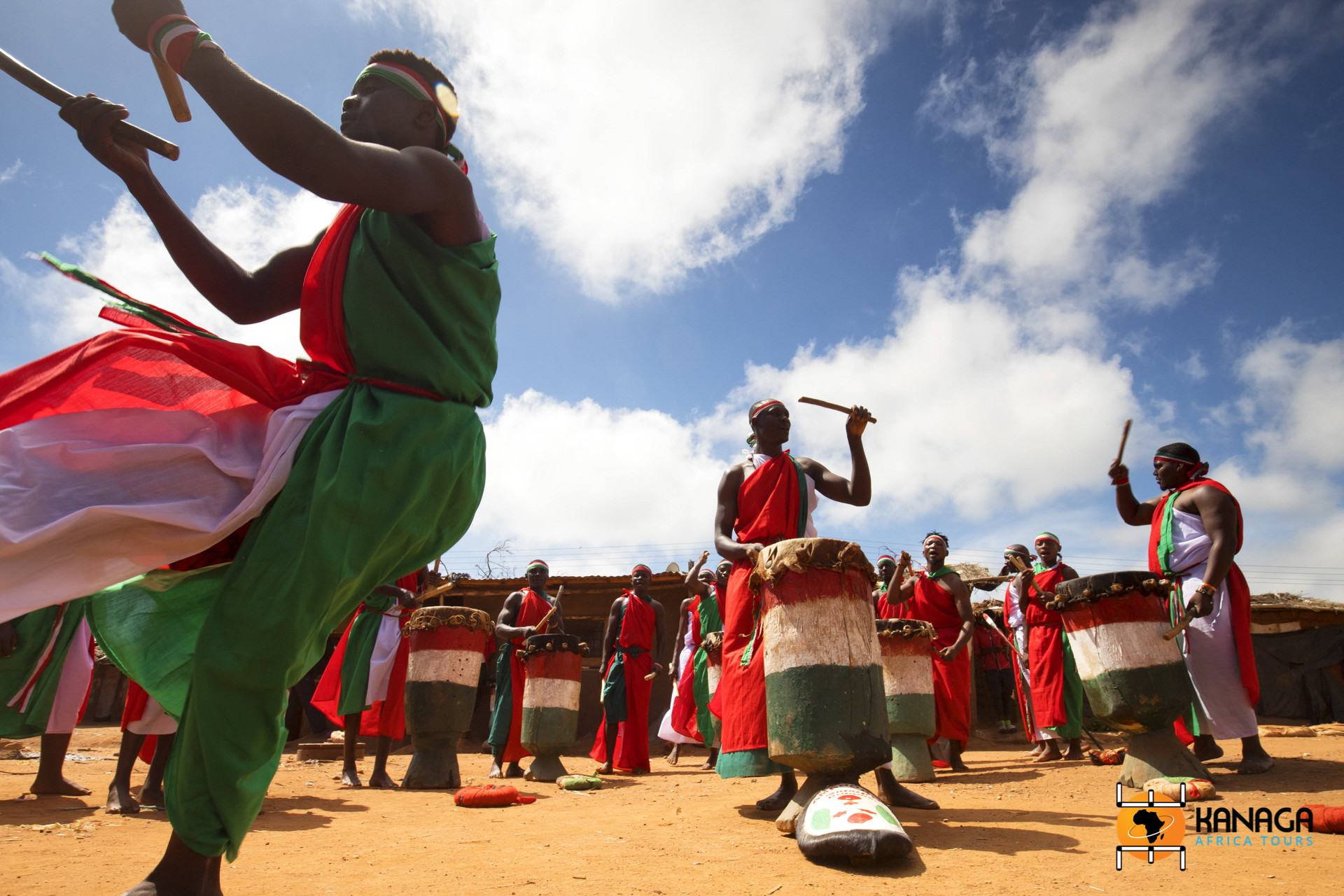The town of Gitega, located in the central plains in a heavily agricultural area, was the centre of Burundi’s monarchy, with its tradition of royal drumming, and the focus of the country’s subsequent colonial history.
Heading into the heart of the country, among green hills, we arrive at the town of Gitega, in an area that between the 16th and 17th centuries was the kingdom of Burundi, created by the founding mwami (king) Ntare Rushatsi. Several sites, such as those of Rubumba, Jurwe and Higiro, bear witness to the greatness of this ancient kingdom, but most of all it is the batimbo, the Gishora drummers, guardians of tradition, who still revive the ancient splendour. They were key figures in the monarchy, guarding its mystical secrets and managing the traditional cults. The ingoma (drums) were carved in a defined number, and each had a specific function, and could only be played in specific circumstances and places. For example, the Karyenda came out of its sanctuary only once a year during the muganuro, while the Rukinzo, which followed the king everywhere, was played every day, and the Inakigabiro was played during the planting season.
Gitenga was also the scene of colonisation, first by the Germans (who founded the town in 1912 under the name Kitega, and the remains of the houses and fort can still be seen) and then by the Belgians (who kept it as the capital of the country until independence).







